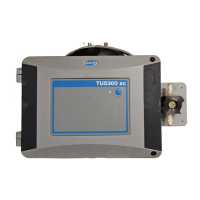PAGE 26 PROGRAM CODES
automatic acknowledge (see Interval Timer B, Program Code 4) and the request for an Acknowledge Code would be
disabled.
The B1290 will continue transmitting its alarms until it receives some form of acknowledgment, automatic or
otherwise, even if it does not request one.
B1290: "Acknowledge Voice is …"
YOU: Acknowledge request is not used
Acknowledge request is used
Exit
Next
Default: 1 (enabled)
Call Progress (Dial Tone Enable)
This setting enables or disables the feature where the B1290 monitors the audio activity on the phone line when it
places a call. If enabled, Call Progress will cause the B1290 to look for dial tone before dialing, watch for a busy
signal on the called line and then wait until the called party speaks before the alarm announcement begins. Without
Call Progress enabled, the B1290 will perform the dial-out operation and speak regardless of the signals encountered
on the phone line.
Do not use the Answer command immediately following a Dial command in the directories when Call Progress is
enabled. This is the equivalent of two Answer commands and may result in unreliable operation.
B1290: "Dial Tone is …"
YOU: Call Progress is not used
Call Progress is used
Exit
Next
Default: 1 (enabled)
Expanders
When Program Code 7 is entered, the B1290 gives you the following parameters.
Number of Expanders
Increase the capacity of a basic B1290 by adding up to 7 expanders, each with an additional 8 alarm inputs and 4
relay outputs.
B1290: "Expander Number is . . . "
YOU: ; Expanders ( x = 0 to 7 )
Exit
Next
Default: 0
Site Voice Enable
This setting enables or disables the announcement of a site ID from the expander unit. If the expander is being used
to increase the number of alarms to be reported from a single site, you probably don’t need to announce the site ID
again. However, the site ID might be useful to differentiate between alarms from different areas or pieces of
equipment.
B1290: "Expander Site Voice is . . . "
YOU: Site voice is not used

